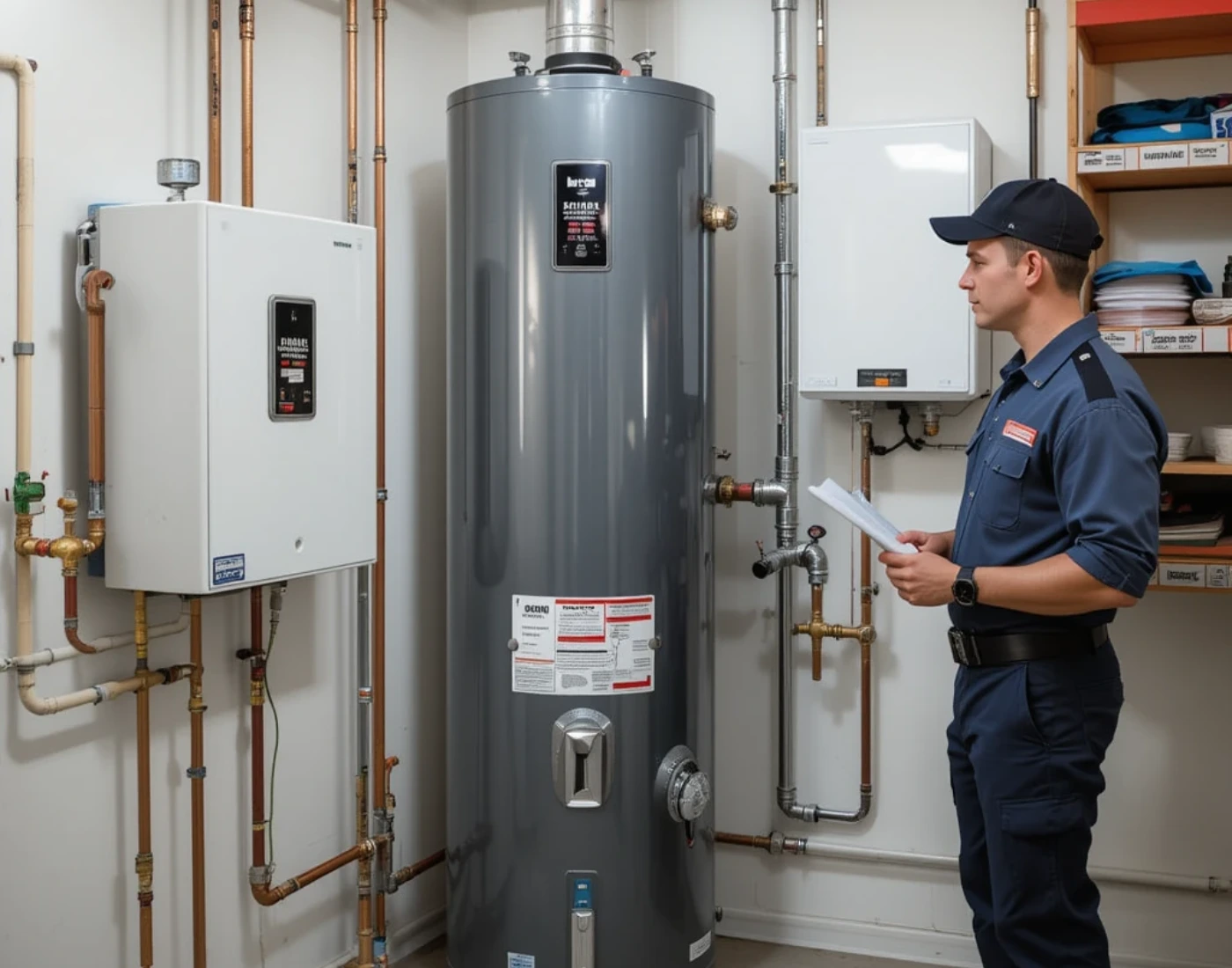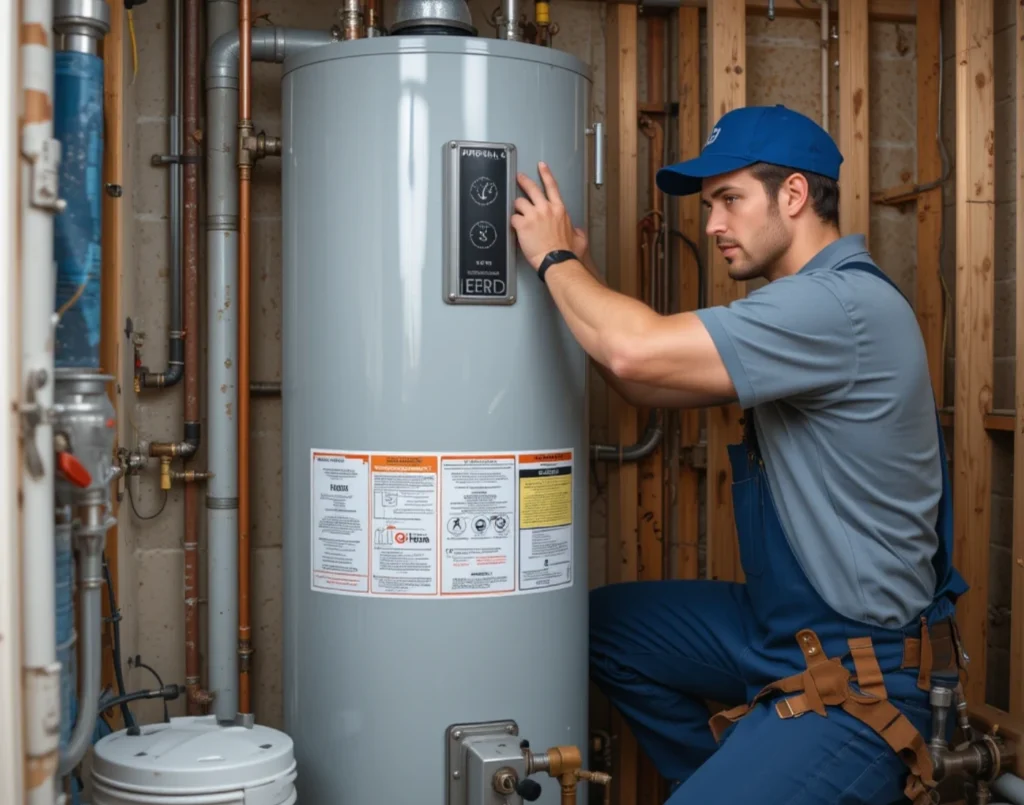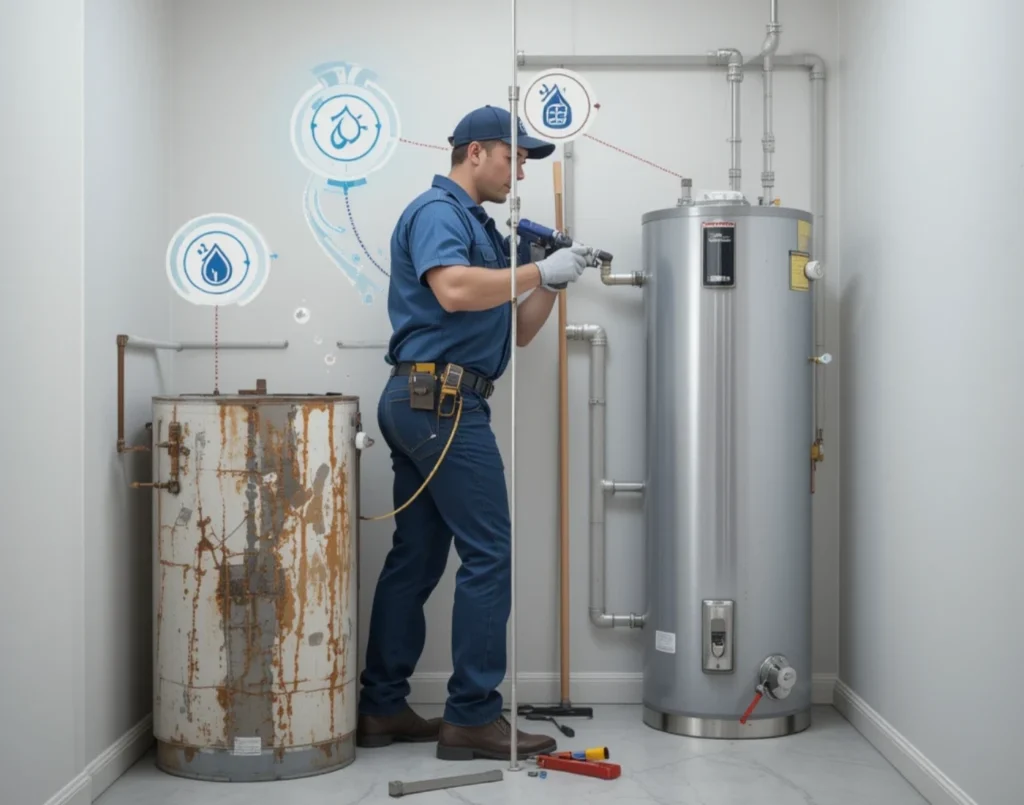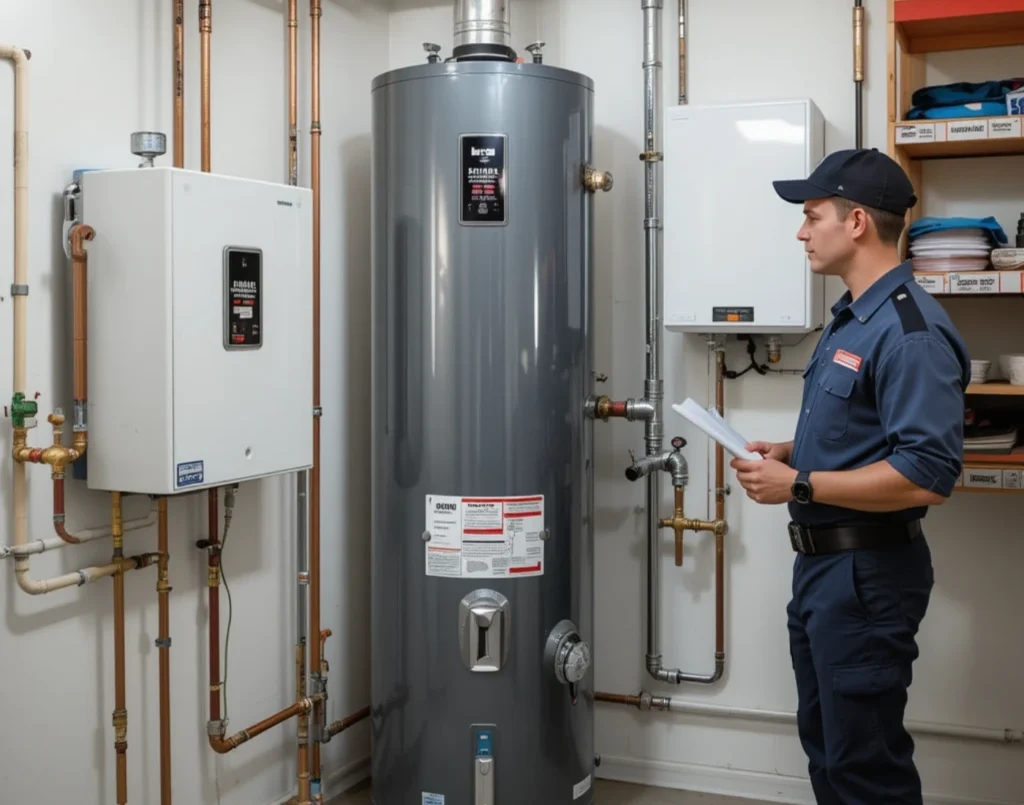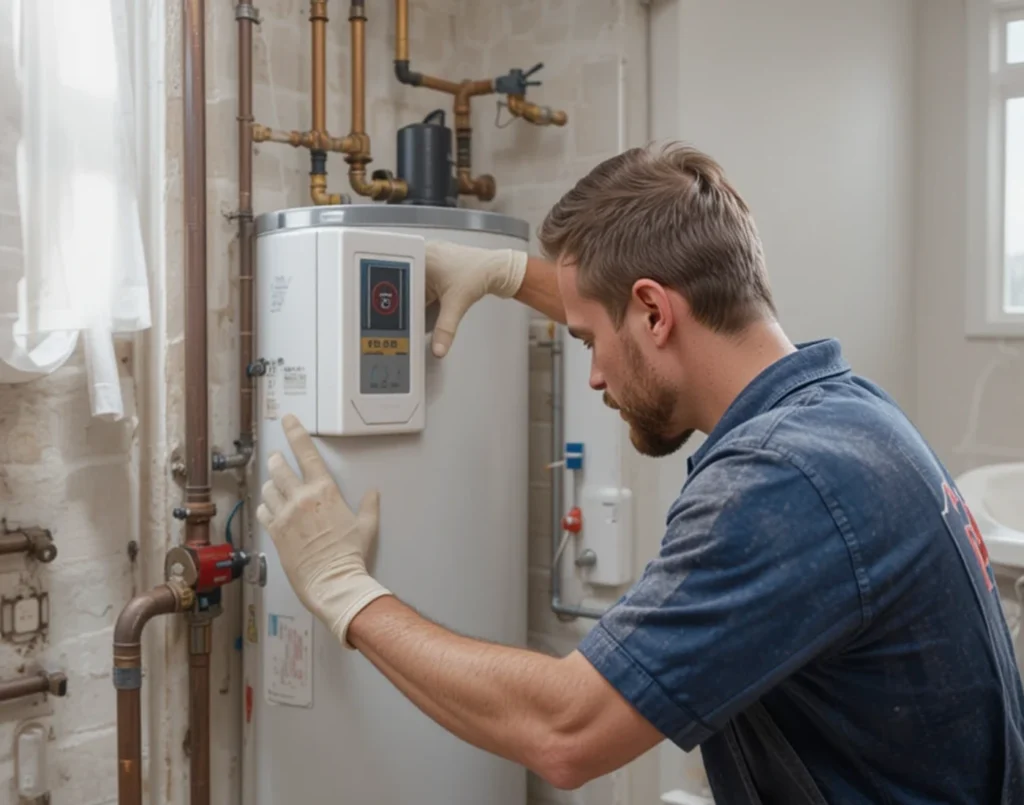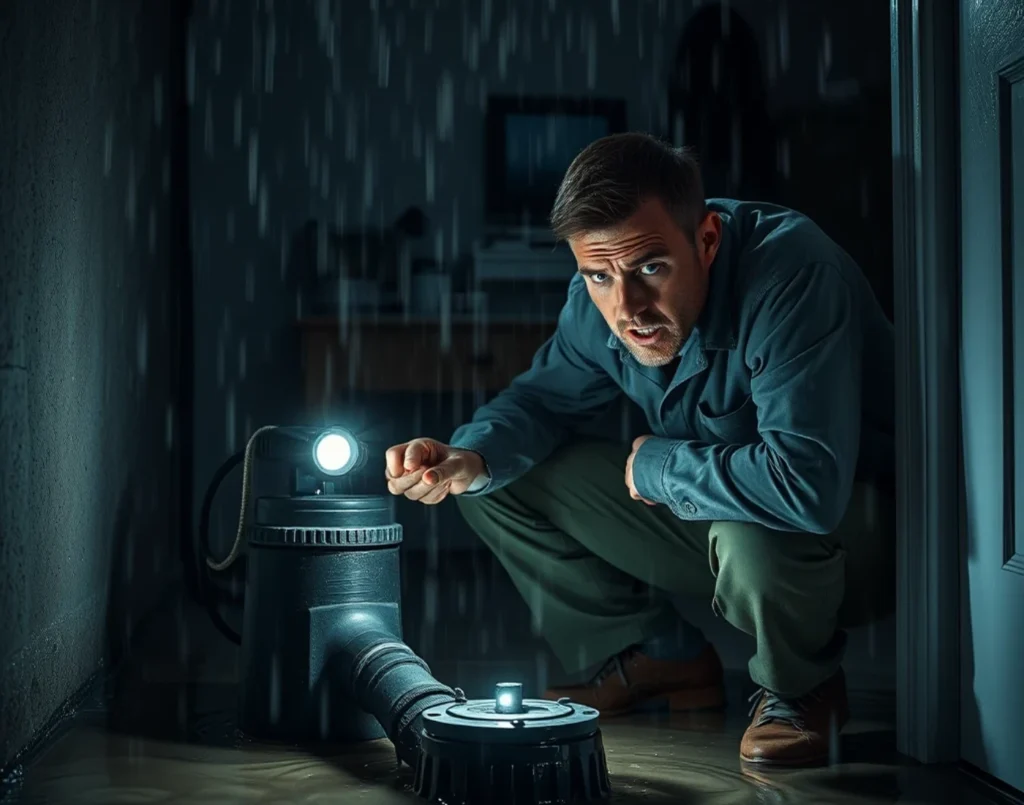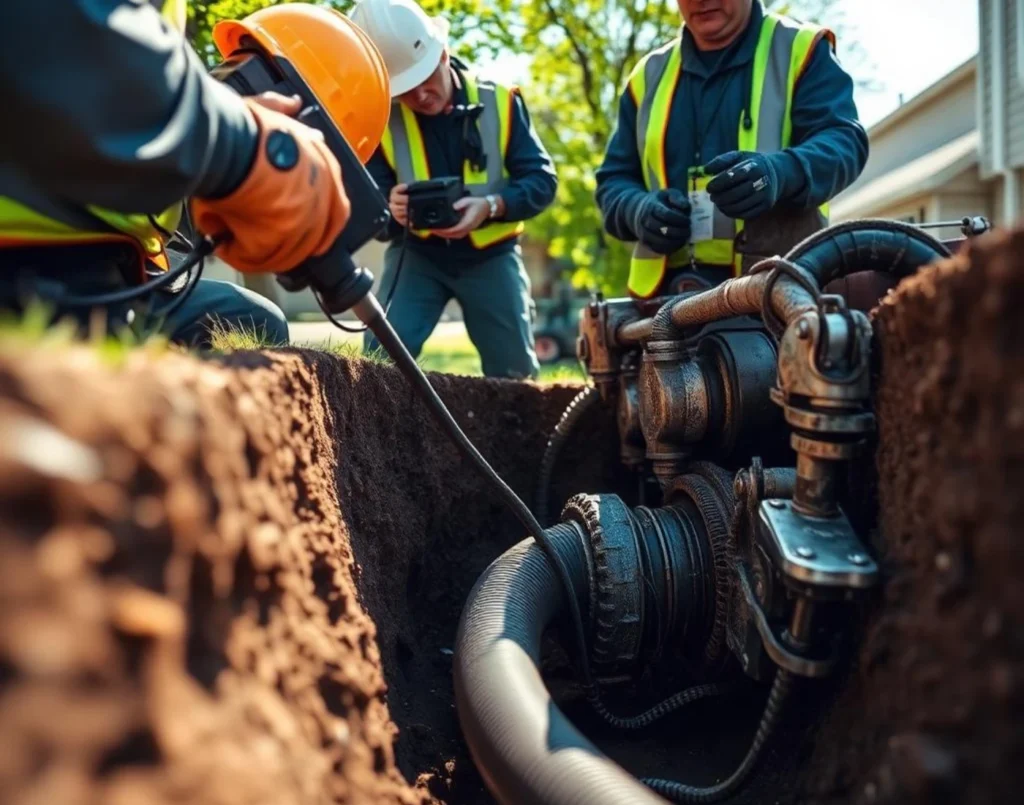Plumbing pipes come in various types, each with pros and cons in cost, durability, and use. Copper pipes are more expensive upfront but offer exceptional longevity. PEX pipes are flexible, affordable, and easy to install, making them ideal for modern homes. PVC pipes are great for drainage systems, while CPVC is better suited for hot water lines.
Common Types of Plumbing Pipes
Modern plumbing uses different pipe materials. Each type is made for specific uses and budgets. Knowing these options helps homeowners make smart choices for new builds or replacements.
Copper Pipes
For many plumbers, copper pipes are the preferred option. They have a strong history of reliability. These pipes resist corrosion because of their natural properties. With proper care, they can last 50 to 70 years.
The main advantages include:
- Excellent corrosion resistance for water supply lines.
- Natural antimicrobial properties improve water quality.
- High heat tolerance for hot water applications.
- Recyclable materials that add to home value
However, copper pipes come with drawbacks. Installation costs are higher due to material expenses and the need for expert help. Cold weather makes copper shrink and expand, which can cause joint failures.
PEX (Cross-Linked Polyethene) pipes
PEX pipes have revolutionised residential plumbing with their flexibility and ease of installation. This material is great for water supply systems. It can also move around obstacles without needing many fittings.
Key benefits of PEX include:
- Flexible design reduces the need for joints and connections.
- Resistant to freezing and burst damage.
- Lower installation costs compared to copper.
- Excellent for retrofitting older homes.
PVC (Polyvinyl Chloride) pipes
For cold water use and drainage systems, PVC pipes are the best option. They are affordable and resist chemicals well. These white pipes are in most modern homes’ waste and vent systems.
PVC offers several advantages
PVC pipes are lightweight and easy to install with basic tools, making them ideal for DIYers and professionals. Their strong chemical resistance makes PVC pipes perfect for drainage and waste systems, which often deal with harsh substances. As a low–cost option, PVC pipes are excellent for large plumbing projects. The smooth interior surface of PVC pipes also helps prevent clogs and buildup, ensuring long-term efficiency and reducing maintenance needs.
CPVC (Chlorinated Polyvinyl Chloride) Pipes
CPVC pipes solve PVC’s temperature limitations by adding chlorination to the manufacturing process. This change allows the pipes to work for hot and cold water supply.
CPVC provides these benefits:
- Suitable for both hot and cold water systems
- Corrosion resistance is superior to that of metal pipes.
- Lower thermal conductivity reduces heat loss.
- Easy installation is similar to standard PVC.
Even with upgrades, CPVC can get brittle as time passes. It might crack when pressure changes occur. Professional installation ensures proper joint connections and system reliability.
ABS (Acrylonitrile Butadiene Styrene) pipes
- ABS pipes are primarily used for drain, waste, and vent applications.
- They perform especially well in colder climates, where PVC pipes can become brittle.
- The zinc coating on ABS pipes helps prevent corrosion and rust.
- ABS pipes offer superior cold-weather performance compared to PVC.
- They have excellent impact resistance, reducing the risk of cracking during installation.
- ABS pipes don’t handle UV exposure well. So, they need protection from direct sunlight.
- Some local building codes choose PVC instead of ABS for some uses. This is because of regulations or the properties of the materials.
Galvanised Steel Pipes
Galvanised steel pipes are coated with zinc to prevent rust, but this protective layer can wear off over time, leading to corrosion. As the inside of the pipe deteriorates, water pressure decreases, increasing the risk of leaks. Due to this corrosion, galvanised steel pipes need to be replaced after 15 to 20 years. Additionally, their weight makes installation more challenging and labour-intensive than newer, lighter options like PEX or PVC pipes.
Galvanized steel pipes were common in homes built before 1960. But now, they are rarely used in new construction. The zinc coating on these pipes is intended to stop corrosion and rust.
Cast Iron Pipes
- Cast iron pipes have a robust design that efficiently handles a large volume of waste flow.
- They are very durable and commonly used for drainage systems.
- Cast iron dampens sound better than plastic pipes, reducing noise from water flow.
- Many cast-iron systems can last 75 to 100 years with proper maintenance.
- However, the installation and repair costs of cast iron pipes are relatively high.
- Over time, corrosion affects all cast iron systems, requiring attention.
- Their heavyweight means they need extra structural support during installation.
Specialized plumbing pipe options
Several specialised pipe materials serve specific applications in modern plumbing systems. Stainless steel pipes resist corrosion well, making them great for high-end installations. Braided pipes offer flexible connections for appliances.
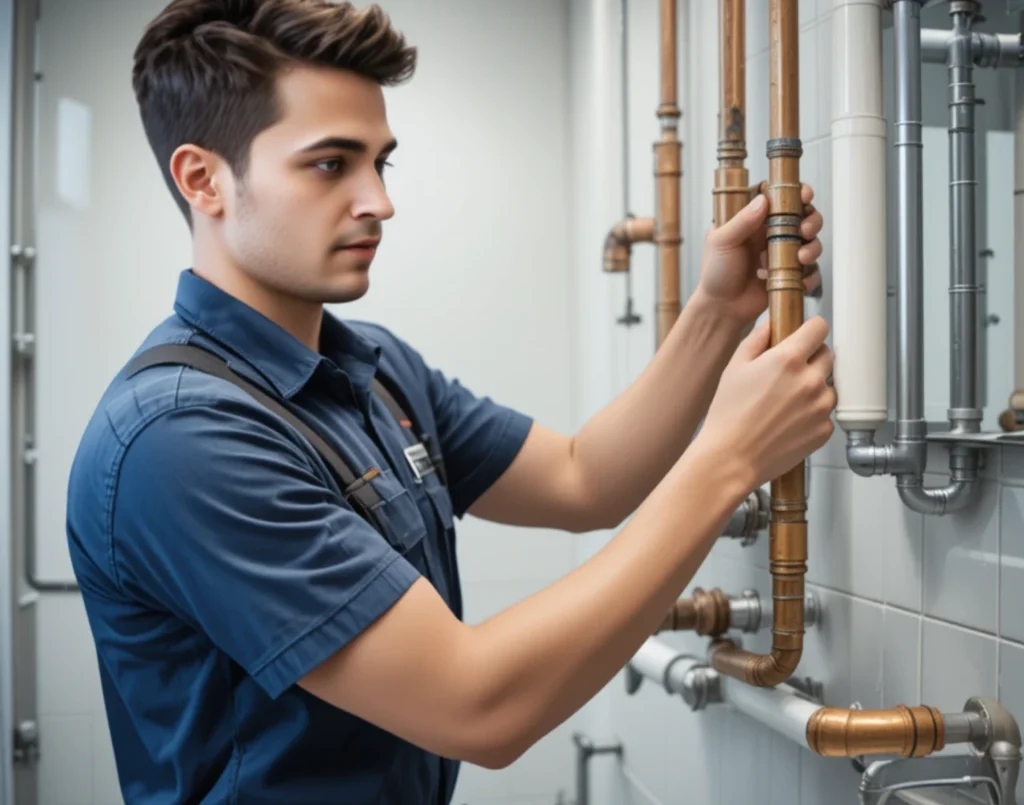
What Should You Consider for Water Supply?
Water supply systems need pipes that keep water quality high. They must also handle changes in pressure and temperature. Choosing the right material impacts not only performance but also long-term costs. For hot water lines, both copper and CPVC offer excellent durability. Copper resists high temperatures well and is reliable. However, it is usually more expensive. CPVC provides similar performance at a lower cost, making it a budget-friendly alternative. PEX piping works well for hot and cold water lines. Its flexibility helps it fit into tight or tricky spaces easily.
Consider these factors when choosing water supply pipes
- Local water chemistry affects material compatibility.
- Installation accessibility influences material choices.
- Budget constraints may favour PEX over copper.
- Building codes in your area may restrict certain materials.
What Works Best for Drain Applications?
Drainage systems require careful consideration, as they handle waste, resist chemicals, and need to ensure smooth flow for years. PVC pipes are the top choice for most residential drainage systems due to their smooth interior surface and chemical resistance. ABS pipes offer similar benefits, with added performance in colder weather. Cast iron is the best option for primary sewer lines, providing excellent durability and noise reduction. Local plumbers can guide you in selecting the right materials based on your drainage needs and soil conditions.
How do cost and durability compare?
Balancing initial costs and long-term performance helps you get the best value. Copper pipes cost more at first, but they last over 50 years. This long lifespan can make the investment worthwhile.
- PEX for supply lines and PVC for drainage are less expensive solutions.
- Premium choices feature copper for supply and cast iron for main drains.
Consider installation complexity when comparing costs. PVC and PEX are great for DIY projects. They make installation easier. In contrast, copper and cast iron usually require a professional to install them.
Long-term Benefits and Lifespan of Plumbing Pipes
Understanding the expected lifespans of plumbing materials helps with planning maintenance and replacements.
- Pipe materials age at different rates depending on water quality and usage conditions.
- Copper pipes typically last 50–70 years under most water conditions.
- PEX systems have an expected lifespan of 40–50 years.
- PVC and CPVC drainage pipes can last over 50 years with proper installation.
- Cast iron pipes are very durable. They last 75 to 100 years. However, they will eventually corrode.
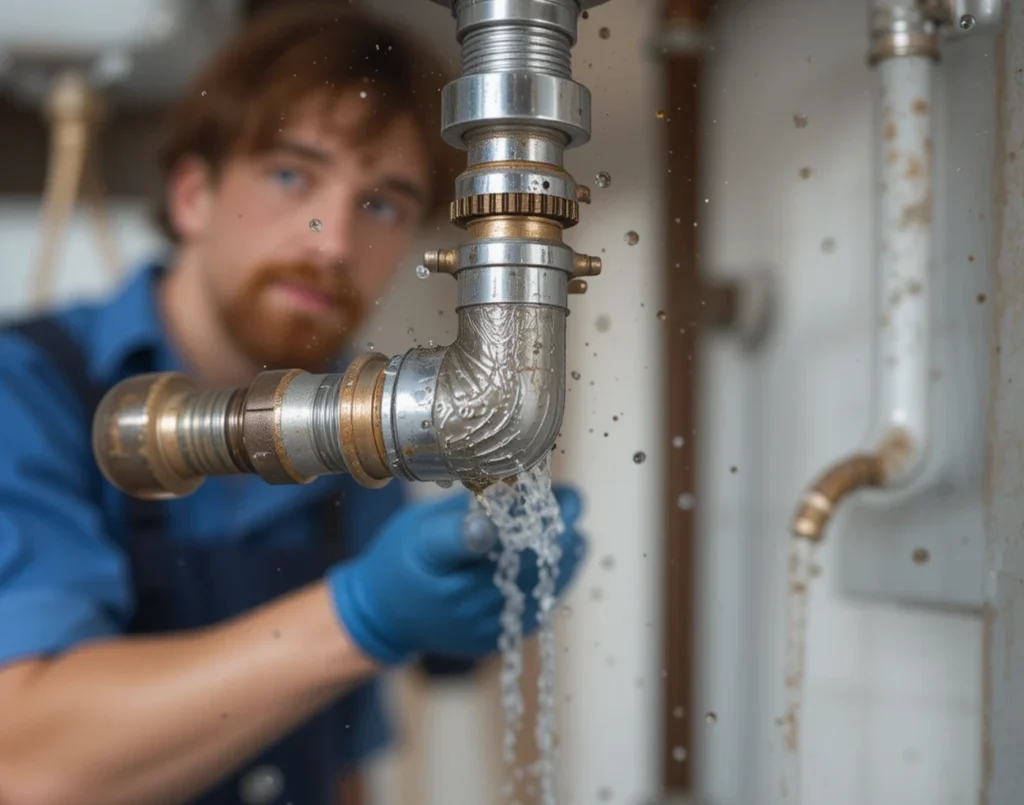
Recognising Signs for Pipe Replacement
Early detection of pipe problems prevents costly water damage and emergency repairs. Knowing what to look for helps you address issues before they become major problems.
Common Indicators of Wear and Tear
Several warning signs indicate that pipe problems are developing and require attention. Addressing these early prevents more extensive damage.
Watch for these common indicators:
- Discoloured water suggests pipe corrosion or mineral buildup.
- Reduced water pressure may indicate an internal pipe restriction.
- Unusual noises during water use can signal loose or damaged pipes.
- Visible corrosion on exposed pipes indicates system-wide issues.
Expert Recommendations on Replacement Timing
Professional plumbers suggest replacing pipes based on their age and condition. Please don’t wait for them to fail. This approach prevents water damage and maintains system reliability. Replace galvanized steel pipes after 15 to 20 years. If copper pipes corrode a lot, a change should also be considered. Another indication that it’s time to replace is frequent repairs. Upgrading during renovations often costs less than emergency replacements.
The Definitive Guide to Plumbing Pipes: Expert Insights
Addressing Pipe Vibration Concerns
- Pipe vibration can happen due to loose mounting brackets or water hammer. Water hammer is a quick pressure surge that occurs when water flow suddenly stops.
- Using clamps or brackets to secure pipes can stop unwanted movement and noise.
- Water hammer arrestors can absorb shock. They help reduce vibration from sudden valve closures.
- PEX pipes are flexible, so they handle vibrations well. This flexibility helps them absorb pressure changes naturally.
Frequency of Pipe Replacement
Most residential plumbing pipes last between 20 and 70 years. This depends on the material and conditions. Galvanised steel needs to be replaced soon. Copper and cast-iron systems last the longest. Regular inspections help determine optimal replacement timing.
Material Selection Tips for Homeowners
Select pipe materials according to local codes, application, and budget. PEX works well for most supply applications, while PVC handles drainage effectively. Consult local professionals familiar with area water conditions and building requirements.
Pro Tips and Safety Advice
- Always turn off the main water supply before starting any pipework. This will help prevent accidental flooding.
- Wear safety gear such as goggles and gloves when cutting, fitting, or handling pipes.
- Test the water pressure after installation to confirm the system is functioning properly.
Follow the manufacturer’s guidelines for pipe supports and joint connections. This helps prevent leaks and failures later on.
Final Reflections and Encouragement
Picking the right plumbing pipes is key. It guarantees a consistent water flow for many years and protects your house investment. Focusing on your needs makes the options less overwhelming and easier.
Take time to evaluate your budget, installation requirements, and long-term goals. Choose traditional copper for longevity or modern PEX for flexibility. Proper installation and maintenance are key to optimal performance.
Read Also: Types of Plumbing Pipes: A Homeowner’s Guide to Pros and Cons
Frequently Asked Questions
1. What are some types of plumbing pipes, and what are their benefits?
There are various plumbing pipes: Copper pipes are durable and ideal for drinking and hot water systems. PEX pipes are flexible, affordable, and resistant to corrosion. PVC pipes are lightweight, easy to install, and best for drainage systems
2. What are the best pipes for house plumbing?
The best pipes for house plumbing include PEX pipes for their flexibility and cost-effectiveness, especially in modern homes. Copper pipes are long-lasting and ideal for drinking and hot water systems, while PVC is perfect for drainage. CPVC pipes work well for hot and cold water systems, and PEX is an affordable, reliable option for new construction.
3. What are PPR pipes, and how do they differ from other plumbing pipes?
PPR pipes are plastic pipes known for their high resistance to temperature. They are used for both hot and cold water systems and are corrosion-resistant. Unlike PEX, they are less flexible and require specialised fittings, but they offer long-lasting durability at a lower cost than copper pipes.
4. What are some types of plumbing or piping systems?
Plumbing systems include the water supply system, which brings clean water into the home, and the drainage system, which removes wastewater. The venting system allows air to flow through the pipes, while the radiant heating system distributes heat through water in pipes, commonly used in homes with underfloor heating.
5. What seasonal maintenance should you perform?
For seasonal plumbing maintenance, insulate pipes in winter to prevent freezing. In spring, check outdoor spigots and irrigation systems. Fall maintenance includes shutting off outdoor lines and inspecting the water heater to prepare for cold weather. Cleaning gutters also prevents water damage to your plumbing.

